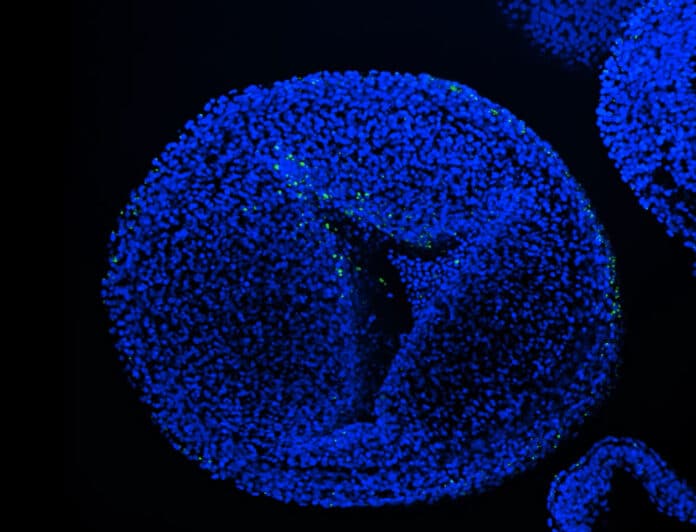Nanomaterials are widespread in the human environment as pollutants and are being actively developed for use in human medicine. Microplastics and nanoplastics (MPs and NPs) are small plastic particles with relevance to human health.
The potentially harmful effects of MPs and NPs have mostly been studied in aquatic organisms, including crustaceans (e.g., Daphnia magna), gastropods, and fish (e.g., zebrafish). These studies have shown that microplastics and nanoplastics can produce a range of toxic effects.
A new study at the Institute of Biology Leiden looked at the extreme effects polystyrene nano-particles could have. Scientists investigated how the size and dose of polystyrene nanoparticles affect malformations in chicken embryos. They also characterized the mechanisms by which they interfere with normal development.
Meiru Wang, a researcher at the Institute of Biology Leiden, said, “We see malformations in the nervous system, heart, eyes, and other parts of the face. We used a high concentration of polystyrene particles that would normally not be present in an organism. But it shows what nano-plastics can do in extreme cases on very young embryos. And it also gives us guidelines on what can happen less severely in the developmental stage.”
Scientists discovered that embryonic neural crest cells are the target of nanoplastics. All vertebrates develop these stem cells quite early on in their development. Starting in the area that will become the spinal cord, the neural crest cells migrate to form a portion of the nervous system. They are also found in the arteries, heart, and face, among other vital organs.
Michael Richardson, supervisor of Wang, explains, “However when nano-particles surround the neural crest cells, the migration of those cells is disrupted. This results in growth disturbances. When you know the mechanism, everything else falls into place. We think they stick to the neural crest cells, which causes the cells to die. Neural crest cells are sticky, so nano-particles can adhere to them and thereby disrupt organs that depend on these cells for their development. I like the metaphor for making dough. When making bread, for example, you put flour on it to make it not sticky anymore. However, in this case, it ruins the migration of the neural crest cells.”
Martina Vijver, is Wang’s supervisor. ‘Because nanoplastics are so small, it is impossible to see them using conventional microscopes. That is what makes it difficult to research. We can only see them when they are fluorescently tagged,’ Richardson explained. ‘Collaboration was the way to go, as this type of research can’t be done as a one-man band.’
The researcher continues: ‘At Naturalis Biodiversity Center in Leiden, Martin Rücklin and Bertie Joan van Heuven were able to make 3D reconstructions of the embryos so that we could see the malformations. And with the high-resolution synchrotron Switzerland, we could see what happens in the heart. Experienced researchers from the LUMC helped define what we see.’
‘Everything is a question mark in research, and you get the chance to fill in the gaps. I have many great supervisors and colleagues who encourage me and make me braver. This research is only one step to seeing the ultimate effects of nano-plastics in our environment. And especially as people are now looking into using them in human medicines, we believe that we should take care before these drastic effects are seen in humans.’
Journal Reference:
- Wang, M., Rücklin, M., Poelmann, R. E., de Mooij, C. L., Fokkema, M., Lamers, G. E., … & Richardson, M. K. (2023). Nanoplastics causes extensive congenital malformations during embryonic development by passively targeting neural crest cells. Environment International, 107865. DOI: 10.1016/j.envint.2023.107865
